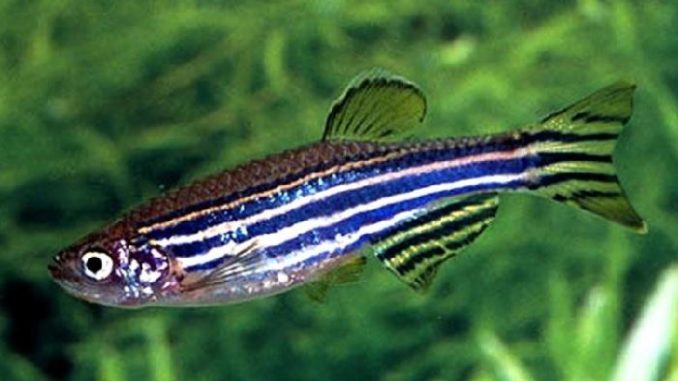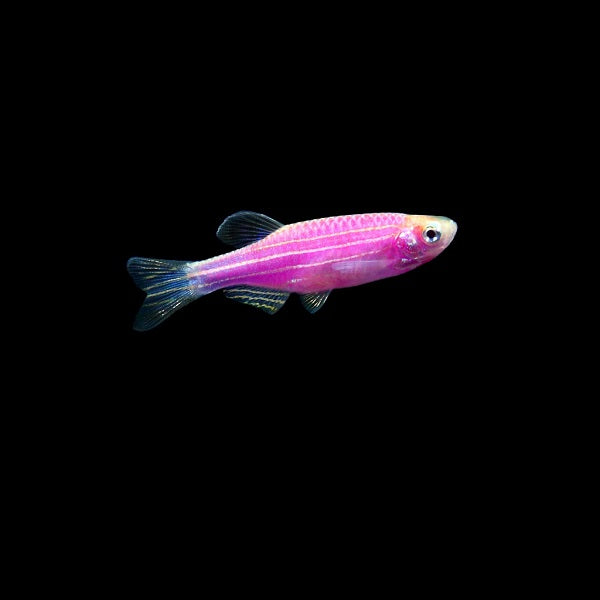6 best tropical freshwater fish for beginner fishkeepers (Part 1)
by Sunjay Muralitharan, May 1, 2021
Diving into the fish-keeping hobby can seem overwhelming at first. Setting up & cycling your tank can take up to several weeks and once you're done you still have to stock your tank. There are countless fish to choose from in the hobby, but not all are suitable for beginners. Some fish, like the pea puffer, have specific dietary needs, others, like the neon tetra (which is ironically one of the most popular aquarium fish in the world), are extremely sensitive to environmental changes.
In determining the fish below, I made sure they were hardy and had simple care and tank needs. In addition, since beginner fish keepers are likely to set up a community aquarium, I made sure that they are all peaceful with a wide compatibility range and the ability to live off of simple flake food.
6. Zebra Danios

Photo: worldwidefishandpets
Starting with number 6 we have the Zebra Danio. Zebra Danios can live for up to 5.5 years and grow to be 2 inches. These fish can live in tanks as small as 10 gallons and are the hardest to kill on this list. In fact, they are so hardy that they can survive in uncycled tanks (cycling is the process where water parameters are altered so that they are suitable for aquarium fish).
Zebra Danios are shoaling fish meaning they enjoy the company of their kind for social reasons; because of this, you have no less than 5 Zebra Danios in your tank at all times. In addition, an ideal tank for these fish should be populated with freshwater aquarium plants (like Java Fern and Amazon Sword Plants); this is because they help replicate their natural habitat as well as provide hiding places for them. This species is mostly peaceful and tends to be happier in community aquariums. However, they are not compatible with long-finned fish (like Sail Finned Mollies or Elephant Guppies) as Zebra Danios are known to nip long fins. This aggressive nipping behavior can be an indicator that their shoal size or tank size is too small.
The insertion of a harmless jellyfish gene allows the seemingly dull Zebra Danio become vibrant Glo-fishes

Photo: GloFish
Compared to the other fish on this list, the Zebra Danios coloration is quite dull. If this is an issue to you, consider purchasing the Golden Morph Zebra Danio: an artificial bread variant of the Zebra Danio with shinny white stripes and a yellowish gold body; another colorful alternative would be the Glo-fish: fish (including Zebra Danios) with inserted jellyfish genes that allow them to glow in the dark under black light. The insertion of this gene does not harm the fish or alter its care needs.
5. Harlequin Rasbora

Photo: Inland aquatics
Next up in number 5 is the harlequin rasbora. These fish are a staple in the aquarium hobby for their elegant markings and shimmering coloration. They grow to be 2 inches in length and can live up to 5 - 8 years. They do enjoy having some plants to hide in but most of their time will be spent in the open waters in the middle level of your tank.
A single Harlequin Rasbora may seem dull, but as a group, they can be a true spectacle. Since they are shoaling fish, you should get no less than 5 of them in your tank. As someone who has kept these fish in various tanks, I would recommend getting more than just 5 to see the true beauty of their shoaling behavior: around 7 to 12 is ideal. These fish are very peaceful but do not do well around boisterous and overactive species (like bettas and clown loaches).
Harlequin Rasboras tend to be very hardy fish and should be easy to care for if you perform regular water changes on your tank and check water conditions regularly. However, they are not as hardy as the fishes listed before and after them on this list: Zebra Danios & Platies.
4. Platies

Photo: alchetron
Coming in number 4 is the Platy. Almost every veteran fish keeper would recommend this fish to a beginner as they are extremely hardy, come in a variety of colors, and can easily be bred. The term “Platy” normally refers to 3 species of fish: the Common Platy (pictured above), the Variable Platy, and the Swordtail Platy. Both the Common and Variable Platy are extremely popular in the fish-keeping hobby; due to heavy inbreeding between the two, it is very difficult to tell them apart. The Swordtail Platy, however, is far harder to come by, and less hardy, making it a poor beginner fish.
Despite their hardiness, Platies have a short life span of 3 - 5 years. They grow to be about 3 inches and have a tank requirement of 10 gallons. While they aren’t shoaling fish, they do tend to be happier around the company of their own kind; you should keep around 3 in your tank at all times. Male Plates are always horny, because of this you should keep the male to female ratio at 1:2 to reduce the stress of the females. These fish are very peaceful and are compatible with pretty much every peaceful fish (as long as they are not small enough to fit into a Platy’s mouth vice versa).
Here is how to tell the difference between a male and female Platy
Photo: Fishlore
One thing to watch out for is how quickly these fish reproduce. Platies are livebearers, meaning they keep their eggs in their body and give birth to live young. This allows for quick and efficient reproduction as the parent fish does not need to protect its eggs. When the fry is born, they will likely be eaten by larger fish in your tank [including their parents]. Even if you do not choose to intervene, it is quite likely that some fry will survive by hiding in your plants or other nooks and crannies in your tank; because this always saves some extra space in your tank for the new generation. Even if you only purchase females it is good to take this precaution since there is a high chance they have gotten pregnant in the fish store.
Overall Platies are an all-rounder beginner fish. Their bright colors and hardiness make both them a staple for single species and community tanks. The only downside with them is their rapid reproduction, which can heavily alter tank conditions if not planned for. No other fish on this list reproduce as rapidly as the Platy.
The Zebra Danio, Harlequin Rasbora, and Platy are all fantastic beginner fish as they are all pretty, hardy, readily available, and easy to care for. Have fun picking which one(s) is best for you. Our next issue will discuss the top 3 fish on this list.
Sources
https://www.thesprucepets.com/low-maintenance-freshwater-fish-4770223
https://www.aquariumcoop.com/blogs/aquarium/10-best-aquarium-fish-for-beginners
https://pethelpful.com/fish-aquariums/the-best-and-worst-beginner-fish-for-your-aquarium
https://www.fishkeepingworld.com/zebra-danio/